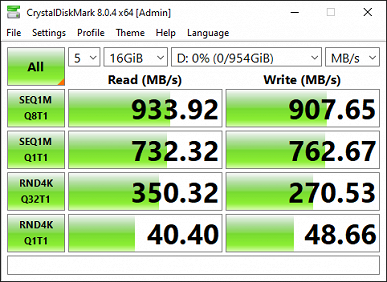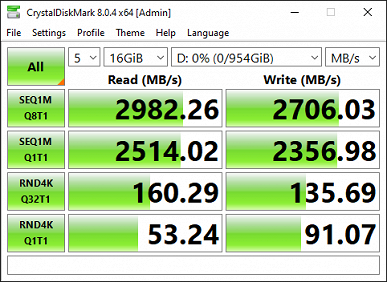For many years, mini PCs based primarily on Intel laptop processors were the standard, and reviews were based on their platform without much emphasis on the chosen platform. However, the situation changed in 2013 with the advent of the first Intel NUC, which used dual-core Ivy Bridge processors. Before this, most nettops were built on slow processors, including atomic processors. They were used primarily for simple tasks, but not for more serious tasks. At that time, AMD was virtually absent from this race due to problems with microarchitecture and processor production. Its attempts to compete with Intel were unsuccessful, and it remained primarily a price competitor.
However, the advent of Ryzen has changed the situation significantly. These processors have become competitive and have caught up with some Intel platforms. However, AMD's early efforts were limited by lack of production capacity and supply issues. It was only with the advent of the Ryzen 5000 series that things began to change and these processors became widespread. However, despite the success, problems with the supply of DDR5 memory have created restrictions on the market. Some segments have been occupied by Intel and Ryzen 5000 solutions capable of using cheaper DDR4 memory.
Powerful mini-PCs based on Ryzen 7000 and 8000 have become available only to those who are willing to pay serious money for them. However, despite the limitations, the mini PC segment remains attractive, especially for those looking for compact solutions with high performance. However, memory supply and price issues continue to pose limitations to this market.

Minisforum has a lot of interesting mini PC models based on AMD processors, and the Venus UM790 Pro we're reviewing today isn't the only one of them. For example, the UM690S offers similar functionality at a more affordable price, powered by a Ryzen 9 6900HS processor that, while a little slower, still provides enough performance for many tasks. Another alternative is the UM760 Pro with a Ryzen 5 7640HS processor, which, although less powerful, may be sufficient for a number of applications.
However, the Venus UM790 Pro justifies its price as a modern top-of-the-line product by delivering great performance and functionality. Ultimately, the choice is up to the buyer, and each model has its own features and advantages. In the context of our testing, the UM790 Pro is more interesting due to its performance and capabilities than its cheaper or older counterparts.
Contents of delivery

The computer and its kit are packed in a bright box.
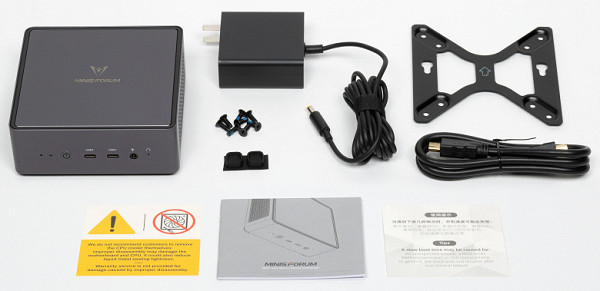
Like many mini-PCs in this class, the Venus UM790 Pro comes with the computer itself, a VESA mount for mounting on a monitor, and a power supply. However, unlike most, the kit also includes an HDMI cable, which usually has to be purchased separately. In addition, the kit includes two additional rubber feet and a small set of paper.
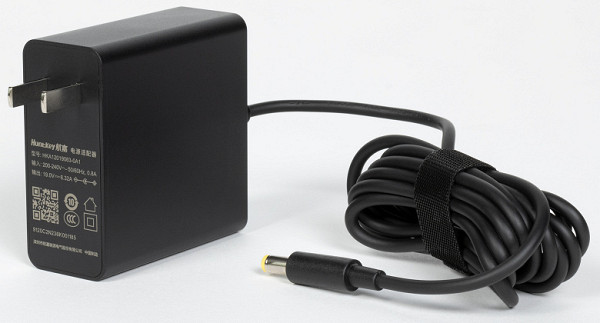
The power supply included with the Venus UM790 Pro has an American plug and a compact design similar to phone chargers. Some power supplies are more bulky, but have a replaceable cable for connecting to an outlet. In both cases, the power is 120 W at a voltage of 19 V. The choice between compactness and ease of use depends on the user's preferences: a compact unit may interfere with adjacent sockets, while a large unit takes up more space, but allows you to comfortably pull away from the outlet. The UM790 Pro can also be powered via USB, but this has its own nuances, which will be discussed below.
Exterior
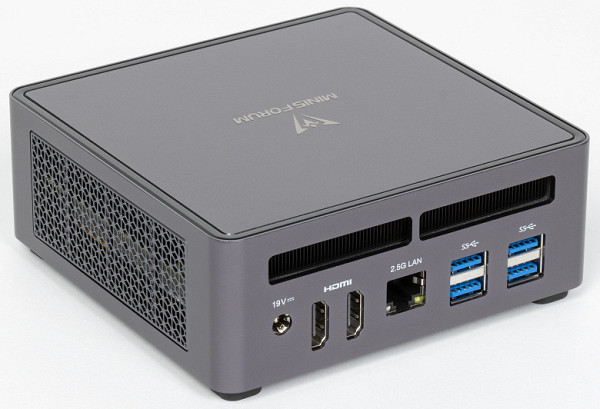
The most powerful mini-PC on the AMD platform that we have studied so far is the Irbis IMFPC107. However, its dimensions differ slightly from standard ones due to the use of desktop processors. In the Venus UM790 Pro we also have six to eight cores and even more powerful graphics than in the X400 series, but the platform is already a laptop, so the dimensions are standard for a mini-PC: 130x126x52 mm. In practice, this is slightly larger than an Intel NUC, but comparable to, for example, the Asus ExpertCenter PN64-E1. In terms of performance and functionality, the UM790 Pro is a competitor to top-end mini-PCs from Intel, and not to compact “simplified” models.
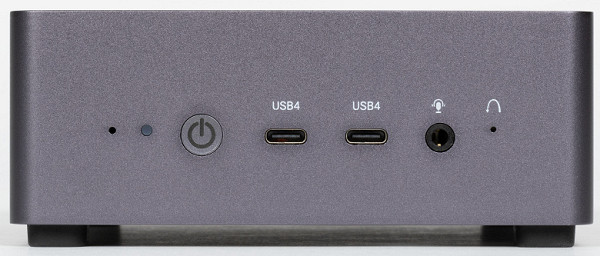
There are two USB4 ports on the front panel of the computer. This is USB4, support for which is built directly into modern AMD mobile platforms, starting with Ryzen 6000. They are fully compatible with Thunderbolt, but we’ll talk about compatibility a little later. Each of these Type-C ports also functions as a DisplayPort video output (up to 8K@60) and can deliver up to 3A at 5V to power connected devices, double the base minimum for USB-C. These ports can also be used to power the computer itself, but we'll talk more about that later.
Other elements on the front panel include a microphone, power button, audio headset combo jack, and a recessed Clear CMOS button. The presence of the latter in a mini-PC is questionable, since the ability to change settings is usually limited. However, this approach is not uncommon, so we will refrain from criticism.
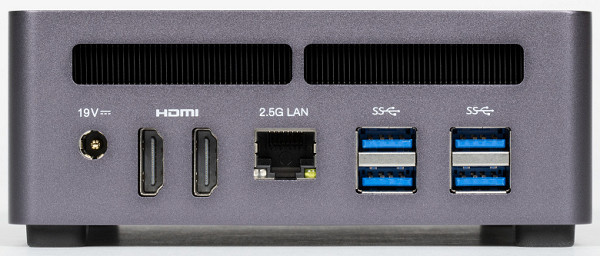
The main set of patch connectors is on the rear panel, as usual. The front USB video outputs are complemented by two HDMI 2.1 ports (up to 4K@144), and four USB 3.2 Gen2 ports are provided for connecting peripherals. In addition, there is a 2.5 Gbps network port and a connector for the power supply. The selection of connectors for the mini-PC is very good, although not outstanding. The standout element here is USB4, since desktop platforms from both AMD and Intel are not equipped with interfaces of this level. Intel laptop processors are currently limited to Thunderbolt only. Unlike desktop systems, where you can add additional capabilities using discrete controllers, built-in platform capabilities are critical to mini PCs.
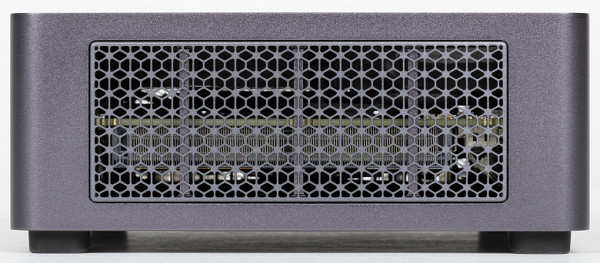
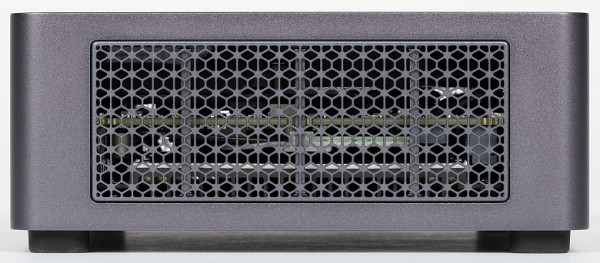
That's all for active elements. The side walls are perforated to improve ventilation.

The bottom is no exception either. You can see a fan on it — this is the second fan of the cooling system. This is not very traditional for a mini PC, but it is quite useful. However, these are internal details that it’s time to move on to.
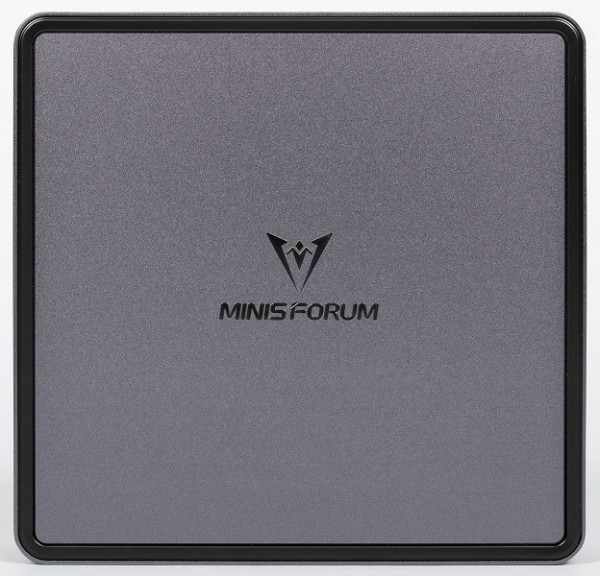
Interior
Disassembly begins in the standard way — by tearing off the four rubber feet and unscrewing the four screws. Then it becomes clear that the plastic bottom is connected to the board by three more wires — wireless antennas and fan power. Disconnect and set them aside.
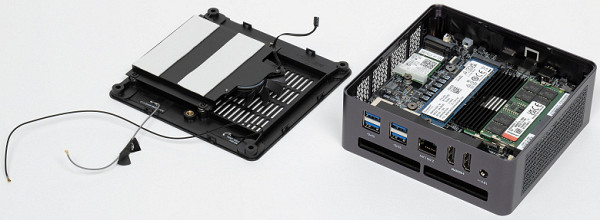
The secret of the second fan is that on this side of the motherboard there are memory connectors and two M.2 2280 slots for SSD, as well as a 2230 slot for Wi-Fi / Bluetooth. Manufacturers typically rely on convection to cool this volume, which has sometimes led to problems. For example, in the first NUC models, the Wi-Fi adapter hidden under the mSATA slot sometimes overheated. In the Venus UM790 Pro series, Minisforum decided to use active cooling. This primarily applies to SSDs, as can be seen in the photo. This decision turned out to be prudent, given the support for AMD's new PCIe Gen4 platforms and enough system power to encourage the installation of a pair of top-end SSDs. Having a heatsink on one of the memory modules, although not necessary, is also useful. The same can be said about the fan, which turns on only under load; its noise is completely masked by the “main” cooler.

But as soon as the bottom cover is removed, we see a standard layout for a mini-PC. Except, perhaps, for that same radiator.
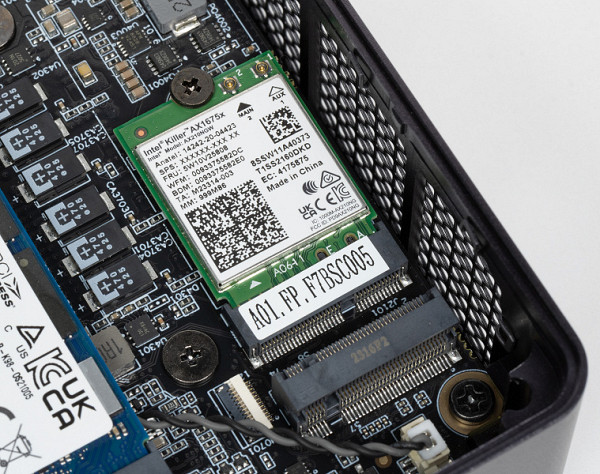
The wireless adapter deserves special attention. The Venus UM790 Pro uses the familiar Intel AX210NGW, but with the ability to install software from Rivet Networks, which was acquired by Intel several years ago. One of the distinctive features of this software is its advanced software configuration and traffic prioritization tools. For example, Killer GameFast automatically recognizes and kills all non-game streams, while Killer Intelligence Engine analyzes network conditions and automatically optimizes settings or offers optimization options to the user. It seems that such functions are unnecessary for a mini-PC, but do not forget that the Venus UM790 Pro is equipped with the most powerful integrated graphics available at the moment, which can be more than enough for many online battles. Thus, this software may be useful. If you don’t need it, you can simply not install it and leave only the standard Wi-Fi 6 driver.

The standard SSD is already well known to us — we recently studied it in detail. This is a four-channel Phison E21T bufferless controller that, combined with TLC memory, covers most typical needs. However, when purchasing a computer, you can choose an option with a 512 GB or 1 TB SSD, or purchase it without a drive and configure it as you wish.
If the second slot is free, then ordering a kit may be more profitable. This is due to the availability of memory: there are not many SO-DIMM DDR5 modules on the market yet. Therefore, if you want to get a standard kit, it is better to choose the UM790 Pro bundled with a drive. However, purchasing components separately gives you more flexibility—you can start with 64GB of RAM and two 4TB drives. In this case, your choice depends only on your imagination and financial capabilities.
The standard SSD is already well known to us — we recently studied it in detail. This is a four-channel Phison E21T bufferless controller that, combined with TLC memory, covers most typical needs. However, when purchasing a computer, you can choose an option with a 512 GB or 1 TB SSD, or purchase it without a drive and configure it as you wish.
If the second slot is free, then ordering a kit may be more profitable. This is due to the availability of memory: there are not many SO-DIMM DDR5 modules on the market yet. Therefore, if you want to get a standard kit, it is better to choose the UM790 Pro bundled with a drive. However, purchasing components separately gives you more flexibility—you can start with 64GB of RAM and two 4TB drives. In this case, your choice depends only on your imagination and financial capabilities.

The reverse side of the board also looks familiar, almost entirely covered by the cooling system casing.
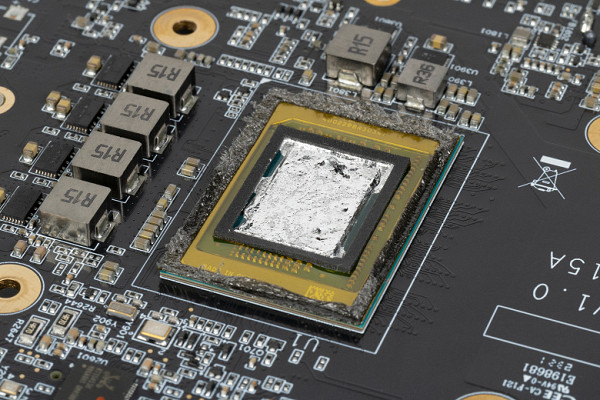
There is no need to climb here at all, except perhaps to clean the fan from dust. Fully disassembling the system is more out of curiosity, and we couldn't resist the opportunity to admire the processor in all its glory. Although almost all of them use “liquid metal” for the thermal interface, so we decided not to bother with complete cleaning, leaving the markings untouched.
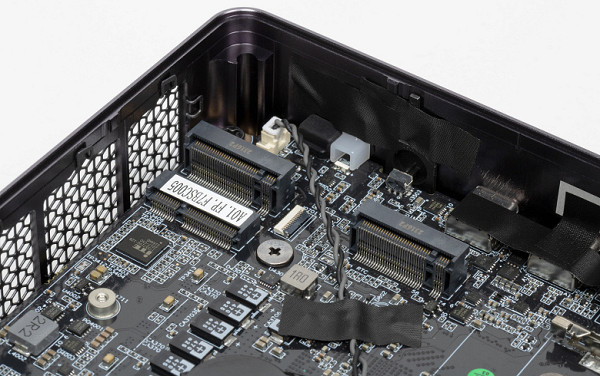
In general, this is a standard mini-PC in its design. Apart from the second fan, which you might not notice, overall it is quite typical. With this approach, full compatibility with 2.5″ form factor drives disappears, but this has long ceased to be something significant, even where it is possible. Especially considering the presence of a pair of M.2 connectors, this functional solution is found even in “large” computers, not to mention mini-PCs.
Hardware configuration
In principle, we have already discussed all the main points in detail above. But a traditional sign won't hurt either.
| Minisforum Venus UM790 Pro | |
|---|---|
| CPU | AMD Ryzen 9 7940HS |
| RAM | 2×DDR5 SO-DIMM 2×DDR5-5600 Kingston CBD56S46BS8HA-16 32 GB |
| Video subsystem | Radeon 780M (integrated) |
| Sound subsystem | Realtek ALC269 |
| Drives | 2×SSD M.2 2280 PCIe Gen4x4 1×Kingston OM8PGP41024Q 1 TB |
| Wired network | 1×Realtek RTL8125 2.5 Gbps |
| Wireless network | Intel Killer Wi-Fi 6E AX1675x (up to 2.4 Gbps) |
| Bluetooth | 5.3 |
| Front Panel Connectors | 2×USB4 Type-C |
| stereo headset jack | |
| Rear Panel Connectors | 4×USB 3.2 Gen2 Type-A |
| 1×RJ-45 | |
| 2×HDMI 2.1 | |
| Dimensions | 130×126×52.3 mm |
| power unit | 120 W 19 V |
Here it is worth paying attention to one important point. The processor in this model is uniquely defined. However, as we already mentioned, there is a more affordable version — the UM760 Pro — powered by a Ryzen 5 processor. There are no options in between, although many users would prefer a Ryzen 7 7840HS-based computer over a Ryzen 9 7940HS as they are almost identical, but have different price categories.
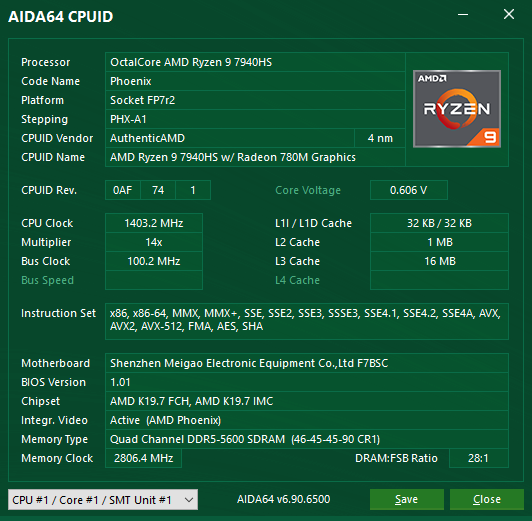
Despite this, the 7940HS processors and its potential replacement 8945HS (attempts to find significant differences between them are futile) are starting to seem somewhat strange in the company's lineup. Ultimately, they become the only eight-core Ryzen 9 processors in this segment, as AMD introduced both 12- and 16-core variants for laptops starting with the 7000 series. However, there is one caveat: these processors are almost identical to those used for the AM5 platform, which means a radical reduction in the video core to a Radeon 610M with two compute units. In “real” APUs, the number of processor cores is only eight, but the number of graphics cores is 12, taking into account all the relevant features. As for a more reasonable choice in favor of the Ryzen 7 7840HS, see the beginning regarding rationality in the top segment.
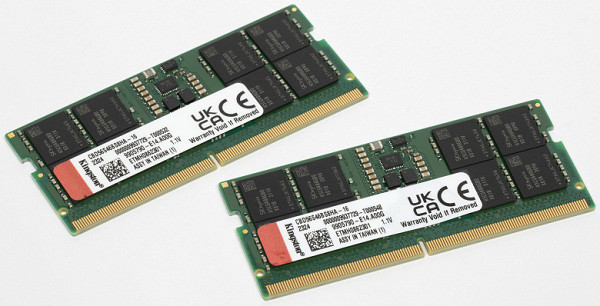
Memory has already been mentioned above, but let's repeat: DDR5 is currently both a strength and a weakness of new AMD platforms at the same time. DDR4 would at least severely limit integrated graphics performance, but would be cheaper. The use of SO-DIMM also limits the capabilities of the new standard, since most modules available on the market are limited to 5600 MHz (standard for these processors), and non-binary modules in this format are not yet available. However, installing 64 GB of memory does not pose any special problems, except perhaps the high cost, which could approach the Ryzen 5 5625U mini PC kit. In practice, the manufacturer often installs 32 GB of memory in these computers, and this is enough for most users.
It is important to note that today we are interested not only in the platform, but also in the mini-PC itself. It's just part of evolution. While AMD can make big leaps forward with occasional stops along the way, the latest «leap» is quite understandable. However, mini PCs that support USB4 or can be powered through it are new to us. We will find out whether this will be useful from the tests, to which we now move on.
Performance
We measured performance in two operating modes: using a standard power supply and via USB. While it would have been possible to use a Power Delivery-enabled power supply, replacing an already good-performing power supply seemed unnecessary. The laptop, of course, can be charged from different sources, and only the charging speed is important, especially in case of unexpected situations. However, for a mini PC that is primarily used as a desktop device, USB power is important not for replacing the power supply, but rather for ease of connection without extra sockets.
How it works? Simply connect it to a suitable monitor with one cable. Monitors typically only provide up to 65W (sometimes up to 90W) via USB, which is significantly less than the power of a standard power supply. So there will always be some performance limitations. In addition, a lot depends on how the computer and monitor “agree” in this case. For laptops this may be less important as it only affects the charging speed of the battery, but for mini PCs it directly impacts performance.
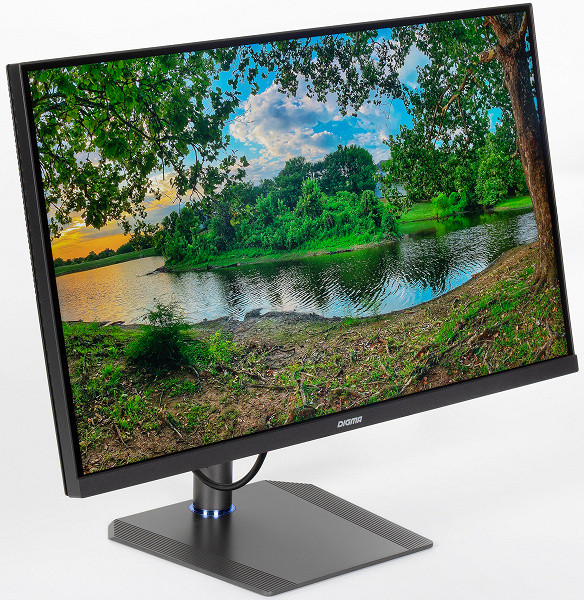
We decided to keep things simple for the UM790 Pro by connecting it to the affordable Digma DM-MONB2709 4K monitor. This turned out to be a convenient solution: just one cable transmits the video signal and power to the computer, and the mouse and keyboard can simply be connected to the monitor, thanks to the built-in hub. However, we needed to check the actual power consumption. Although Digma claims support for PD profiles up to 65 W, when testing other monitors in this series with laptops, we found that the consumption from the outlet increases by only 42 W. This is more than half the power of a standard power supply, plus another 15 W are “saved” on a busy port. Although the latter is smaller, this scenario is still practical, which explains the need for USB power.
So we have two modes of operation. But to make a comparison, you need to compare the UM790 Pro with other devices. As reference points, we chose the Irbis IMFPC107 with an AMD Ryzen 7 5700G processor and the Asus ExpertCenter PN64-E1 with an Intel Core i7-13700H processor. Both devices offer impressive performance, but each has its own quirks that we're going to explore.
| Irbis IMFPC107 (Ryzen 7 5700G) | Asus ExpertCenter PN64-E1 (Core i7-13700H) | Minisforum Venus UM790 Pro (Ryzen 9 7940HS) | Minisforum Venus UM790 Pro (Ryzen 9 7940HS) / USB PD | |
|---|---|---|---|---|
| Video conversion, points | 161.1 | 153.1 | 204.2 | 56.2 |
| MediaCoder x64 0.8.57, c | 77.10 | 71.10 | 62.41 | 263.48 |
| HandBrake 1.2.2, c | 99.78 | 106.66 | 75.17 | 246.97 |
| VidCoder 4.36, c | 249.42 | 294.69 | 200.67 | 694.35 |
| Rendering, points | 175.0 | 192.2 | 221.2 | 99.6 |
| POV-Ray 3.7, with | 55.95 | 50.08 | 44.23 | 144.05 |
| Cinebench R20 | 67.90 | 60.47 | 52.65 | 113.53 |
| Blender 2.79, with | 94.19 | 87.05 | 77.06 | 170.69 |
| Adobe Photoshop CC 2019 (3D rendering), c | 82.40 | 76.98 | 64.41 | 100.90 |
| Video content creation, points | 130.1 | 248.6 | 180.3 | 72.4 |
| Adobe Premiere Pro CC 2019 v13.01.13, c | 210.46 | 118.81 | 155.96 | 344.81 |
| Magix Vegas Pro 16.0, c | 374.00 | 232.58 | 212.33 | 807.00 |
| Magix Movie Edit Pro 2019 Premium v.18.03.261, c | 290.06 | 38.00 | 200.27 | 520.37 |
| Adobe After Effects CC 2019 v 16.0.1, with | 279.33 | 262.33 | 226.33 | 406.33 |
| Photodex ProShow Producer 9.0.3782, c | 169.54 | 153.66 | 140.79 | 344.58 |
| Digital photo processing, points | 103.5 | 153.8 | 174.6 | 91.0 |
| Adobe Photoshop CC 2019, s | 710.32 | 537.37 | 563.34 | 758.33 |
| Adobe Photoshop Lightroom Classic CC 2019 v16.0.1, c | 147.69 | 79.14 | 64.02 | 91.06 |
| Phase One Capture One Pro 12.0, c | 261.43 | 196.64 | 158.53 | 585.45 |
| Text recognition, points | 209.2 | 191.3 | 255.9 | 53.1 |
| Abbyy FineReader 14 Enterprise, c | 235.19 | 257.18 | 192.26 | 926.82 |
| Archiving, points | 118.6 | 173.1 | 173.3 | 82.7 |
| WinRAR 5.71 (64-bit), c | 386.93 | 273.26 | 257.71 | 574.75 |
| 7-Zip 19, c | 337.91 | 224.47 | 237.72 | 468.24 |
| Scientific calculations, points | 149.3 | 164.8 | 198.1 | 93.3 |
| LAMMPS 64-bit, c | 100.97 | 95.24 | 72.91 | 162.68 |
| NAMD 2.11, with | 106.58 | 95.57 | 84.15 | 218.32 |
| Mathworks Matlab R2018b, c | 44.28 | 43.45 | 35.27 | 77.90 |
| Dassault SolidWorks Premium Edition 2018 SP05 with Flow Simulation 2018, c | 99.00 | 80.33 | 70.33 | 112.00 |
| Integral CPU result, points | 145.9 | 180.1 | 199.3 | 76.3 |
And for clarity, the normalized results are shown in the diagram.
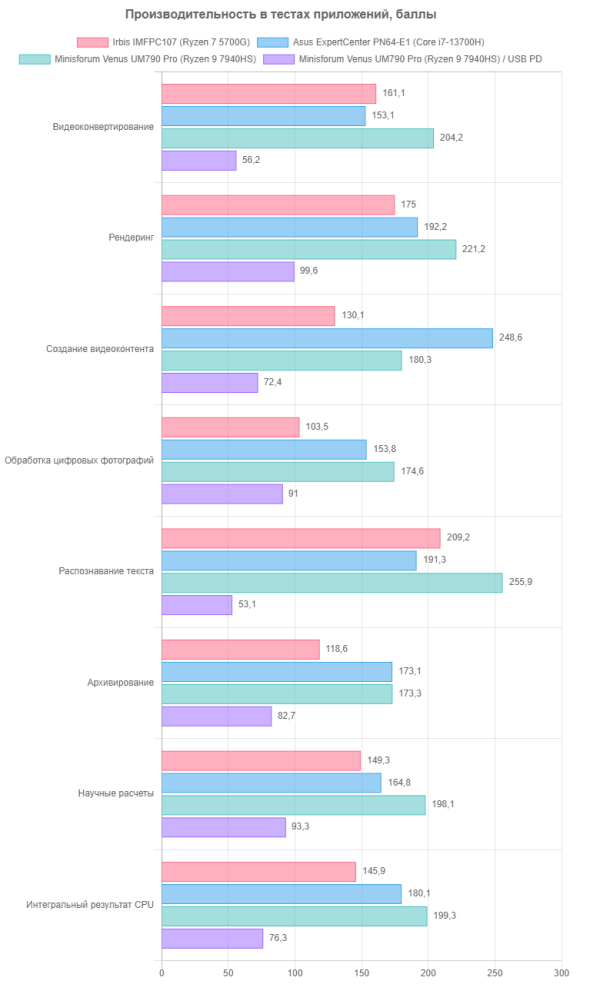
When analyzing the standard operating mode, it becomes clear that the previous generation (6000 series) was not powerful enough, especially considering that the reason for purchasing it appeared after it had become obsolete. The performance gain of the new Ryzen 9 7940HS processors is clearly noticeable, especially in tasks that require optimization for new commands. Despite this, Intel's Ryzen processors come out ahead, especially in GPU-intensive tasks. Software compatibility issues also arise, but overall, AMD's eight-core processors offer better performance.
However, USB power mode looks much less encouraging. All functions work without problems, but performance is significantly reduced. Probably, the reasons for this will become clear after analyzing the power consumption of processors. Temperature sensors on AMD processors, with the exception of the Ryzen 7 5700G and earlier models, may show values that do not correspond to reality. Intel also has some monitoring issues, but they are less serious. Overall, relying on monitoring data alone can be risky, but it is still important to consider monitoring data.
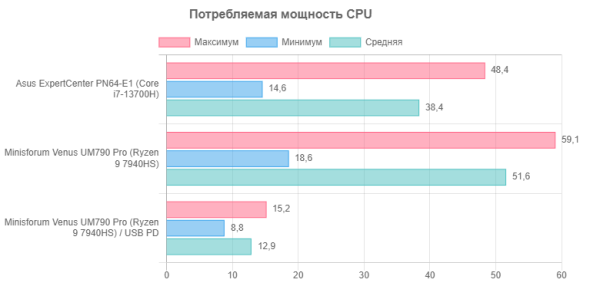
While this may irritate AMD fans, the difference in power consumption between the Ryzen 9 7940HS and Core i7-13700H processors was significant, even greater than the difference in performance. Even though the Intel-powered Asus mini PC is limited to 35W, it doesn't fall short on average in terms of power consumption. Ryzen processors turned out to be more conservative, but are capable of consuming up to fifty watts even in long-term mode. When powered via USB, processor performance dropped even lower than that of standard Ryzen U-series models, which may be caused by poor connectivity or implementation features. In any case, USB power mode, while useful for some tasks, is not recommended for more powerful mini PCs.
Regarding USB4, the issue of compatibility is important. Although the standard does not mandate support, it may include both Thunderbolt 3/4 and USB3 Gen2×2 mode. Although the latest series of AMD desktop chipsets have implemented support for it, this does not matter for laptop SoCs. To check compatibility, you can use two SSD boxes: Orico M2V01-C4, which supports Thunderbolt and USB up to Gen2, and Orico M2PVC3-G20, which only works with USB up to Gen2×2. Using CrystalDiskMark you can determine potential read and write speeds.
According to the image on the left, Thunderbolt works, which is not surprising given that there have been quite a few peripherals for it on the market over the last ten years. However, there are practically no peripherals for USB4, so limiting yourself to only official modes would be impractical. According to the image on the right, there is no support for Gen2x2 mode, which means that 20 Gbps speeds will have to be forgotten. It's not fatal, but it's a little disappointing given the availability of boxes that support this mode. The user will either have to invest in them or use the older (but cheaper) Gen2 mode. All computer ports support this mode, including the rear ones, despite their markings, which has been verified.
As for gaming performance, we will not give numbers now — they are available in the corresponding material. However, it can be said that compared to previous generations of AMD integrated GPUs, the updated 7000/8000 series models or even the not-so-new 6000 series represent significant progress. Evaluating the Radeon 780M's gaming performance will be important in the near future as it will be used as a benchmark for a long time to come.
Noise level and heating
We measure noise levels in a special soundproof and semi-silent chamber. The sound level meter microphone is located at a distance of 50 cm from the front panel. The load is generated by powerMax. The room temperature is maintained at 24 degrees, but the PC is not specially ventilated, so the air temperature in its immediate vicinity may be higher. To estimate real consumption, we also provide data on network consumption in some modes.
| Load scenario | Noise level, dBA | Subjective assessment | Mains consumption, W |
|---|---|---|---|
| Standby mode | 16.2 (background) | conditionally silent | 1 |
| Inaction | 16.3 | conditionally silent | 6 |
| Maximum CPU Load | 28.3 | quiet | 82 (max 87) |
Overall, this PC does not produce significant noise levels. At minimum load, only the fan on the processor heatsink is audible, but the noise is almost unnoticeable. Even at maximum load, the sound character remains smooth and unobtrusive. The spectrogram at maximum CPU load also shows a smooth frequency distribution, with no high-intensity peaks that could cause irritation.

To subjectively assess the noise level, we use the following scale:
| Noise level, dBA | Subjective assessment |
|---|---|
| Less than 20 | conditionally silent |
| 20-25 | very quiet |
| 25-30 | quiet |
| 30—35 | clearly audible |
| 35—40 | noisy |
| 40—45 | very noisy |
| 45—50 | loud |
| Above 50 | very loud |
Less than 20 dBA — the computer is considered silent, from 20 to 25 dBA — the PC can be described as very quiet, from 25 to 30 dBA — the noise from the cooling system will not be too noticeable against the background of the usual sounds of an office with several employees and working computers, from 30 to 35 dBA — the noise is noticeable, but does not interfere with long-term operation, from 35 to 40 dBA — the noise becomes more noticeable and may require the use of masking background music for work, from 40 to 45 dBA — the computer is very noisy, from 45 to 50 dBA — level noise becomes extremely uncomfortable, and above 50 dBA, headphones are required for comfortable work. This scale is arbitrary and does not take into account the individual characteristics of the user and the nature of the sound.

Above
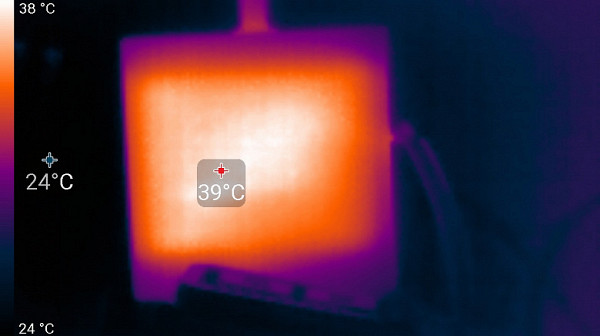
power unit
Under maximum load, the heating of the PC case is low, the heating of the power supply is also small, but it is better not to cover it with anything.
Results
These mini PC models are truly class leaders today. Although cases of similar sizes, like the Minisforum Venus UM790 Pro, can integrate laptop video cards, for full video performance standard computers are preferable. Not only do they offer higher levels of performance, but they are also easier to upgrade. However, as a compact, fully integrated solution, these mini-PCs have no competition. Despite the strange appearance of desktop computers with corresponding APUs, their use here is justified, especially considering the availability of other means of solving the same problems.
The question of the need for top-end processors in such mini-PCs remains open. The next level of performance usually costs more, leading to a higher price tag. Minisforum's decision to install the Ryzen 9 7940HS rather than the more affordable Ryzen 7 7840HS may seem unusual, but it comes at a price to match. However, the cost of processors for computer manufacturers often remains a mystery. While there is no alternative to the Ryzen 9 7940HS in this segment, using less powerful processors like the Ryzen 5 or the «older» Ryzen 9 6900HS can significantly reduce the overall price without sacrificing much performance. When choosing, you will have to carefully weigh the pros and cons. In any case, technically these mini-PCs remain the most powerful and functional in their class. However, exclusive offers will always be expensive by definition — that's part of their appeal.

